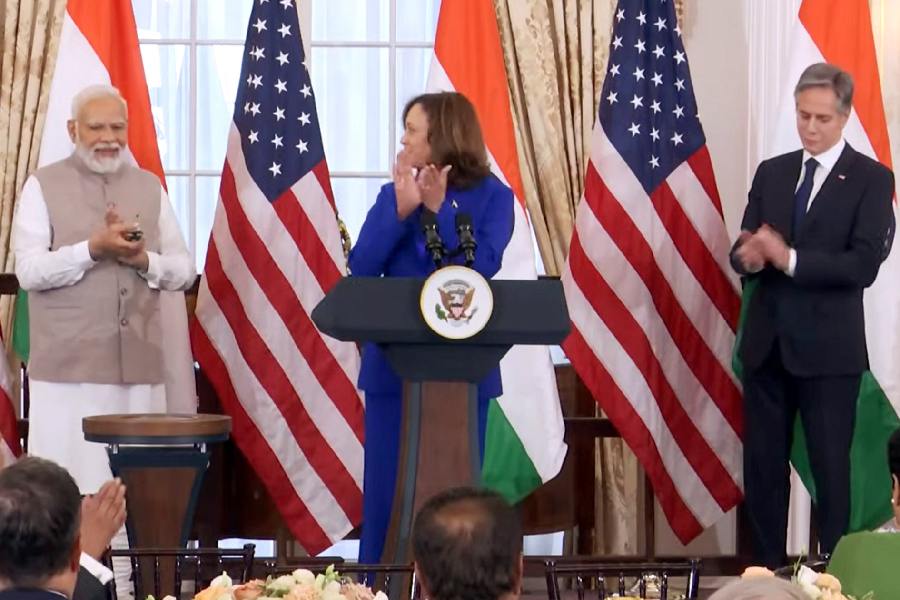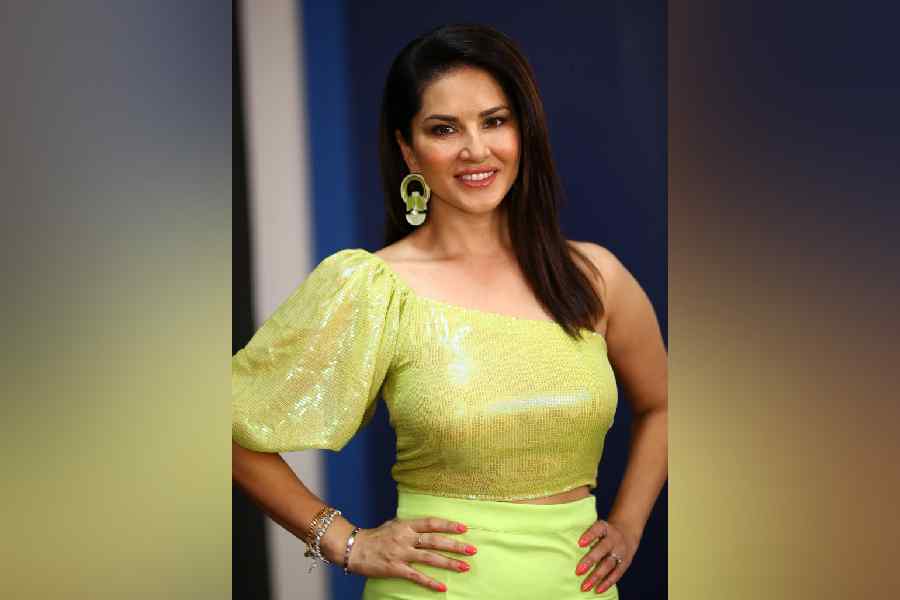Jokes of a particular genre and matters of great profundity often have the opening lines: “If you can ask the genie to fulfil only one wish, what would it be?” or “if you can ask God only one question, what would it be?”
So, it was at the White House on Thursday with President Joe Biden announcing: “I’m told there are two questioners: Sabrina from The Wall Street Journal and Kumar from the (Press) Trust of India. And, Sabrina, you first.”
Sabrina Siddiqui, the Journal’s White House correspondent, was facing neither a genie nor God.
The leaders of the planet’s most powerful nation and most populous nation had just concluded their opening remarks in what the White House described as a “joint press conference”.
It was question time — that annoying and insolent occupational hazard associated with democracies and a rarely sighted endangered species as far as Indian Prime Minister Narendra Modi is concerned.
It was also an unstated acknowledgement from Modi, the Great Communicator and the Twitter Messiah who did not need press conferences to get across his messages to the waiting multitude, that even he cannot bully all democracies, however imperfect they are, into torpedoing an essential tool that forms the cornerstone of accountability in public life.
In fact, The New York Times thought it fit to report that “the visit’s most surprising breakthrough was a modest if notable one as Mr Biden coaxed Mr Modi into taking questions from reporters at a joint news conference, one of the rare times the nationalist prime minister has done so in his nearly decade-long tenure”.
The two-question “press conference” was indeed rare — Modi’s third such lip service to adhering to the democratic tradition during his 3,316 days as Prime Minister.
But “the nationalist” Prime Minister has not been that “national” in any of the three interactions. There has always been a “foreign hand”.
The previous two occasions were also “joint press conferences” with foreign leaders — both in 2015, with then US President Barack Obama in New Delhi and with British Prime Minister David Cameron in London.
All three with foreign leaders. One in India, two on foreign soil — not a good advertisement for either nationalism or Make in India.
At the White House on Thursday, Siddiqui asked Modi: “Mr Prime Minister, India has long prided itself as the world’s largest democracy, but there are many human rights groups who say that your government has discriminated against religious minorities and sought to silence its critics. As you stand here in the East Room of the White House, where so many world leaders have made commitments to protecting democracy, what steps are you and your government willing to take to improve the rights of Muslims and other minorities in your country and to uphold free speech?”
Modi categorically denied any discrimination in India. The Prime Minister did not answer the second part of the question.
The other journalist, of course, asked about climate change.
That Siddiqui, an accomplished journalist, asked about the Elephant in the Eagle’s den is in itself a testimony to the brand of journalism that autocrats find indigestible.
Siddiqui works for The Wall Street Journal, the newspaper Modi chose to give an interview before starting his US state visit. The newspaper belongs to the Murdoch stable. Rupert Murdoch’s son James Murdoch, who is not known now to be actively associated with managing the news business, and the scion’s wife Kathryn Murdoch were among the invitees to the White House State Dinner in honour of Modi.
There’s a lesson for Godi Media here: A family related to the newspaper management may be breaking bread with the leader in the evening but that did not prevent the professional journalist from asking what most of the world wanted to know.
Modi is not entirely unfamiliar with this territory — perhaps the reason he does not address regular press conferences in India where numerous questions can be asked.
Media watcher Sevanti Ninan told The Telegraph on Friday: “Modi established at the beginning of his tenure that there would be no press conferences. He opted to communicate directly through social media, and used the state media. The joint press conferences are expected as a diplomatic practice. He has done them as a token, as part of an event. It has been reported that the press conference with Biden took place after negotiations with the Americans.
“It is clear he doesn’t want to be accountable to non-State media. When the BBC interviewed him in 2002, he said, ‘one area where I have been very weak, and that was to handle the media’. Post-2002, he has been known to walk out when interrogated by journalists such as Karan Thapar and Prannoy Roy.”
Footage of the 2002 interview — soon after riots in Gujarat where he was chief minister — was used in a recent BBC documentary that has been disallowed on most online platforms in India. Students who screened the documentary on campuses have been severely punished.
Modi walked out of an interview with Thapar in 2007 with the parting words, “dosti bani rahe (let our friendship remain)”. Thapar told this newspaper in March that Modi exacted his “revenge” on him a decade later by a complete boycott of the former by BJP leaders.
Ruchir Sharma says in his book Democracy on the Road that Roy, the founder-editor of NDTV, questioned Modi at a private dinner about his role in the riots. Modi denied any involvement but left before the food was served. Last year, the Adani group, considered close to Modi, acquired the stake of Roy and his wife in NDTV.
Under repeated challenges by Congress leader Rahul Gandhi for the Prime Minister to be quizzed by the media in 2019, Modi appeared at Amit Shah’s press conference while the Lok Sabha polls were on.
Modi gave a 12-minute monologue and let Shah, the then BJP president, answer all the questions posed without intervening in even a single one in the 53-minute interaction.
Not all predecessors of the current Prime Minister held formal media conferences but none of them, unlike Modi, was known for actively shunning unflattering media.
Modi does give interviews. In at least one, Modi cannot be accused of lacking in candidness. When actor Akshay Kumar asked a question — how Modi eats his mangoes — the Prime Minister let out the state secret that the nation wanted to know: directly from the tree, when he was a child.












